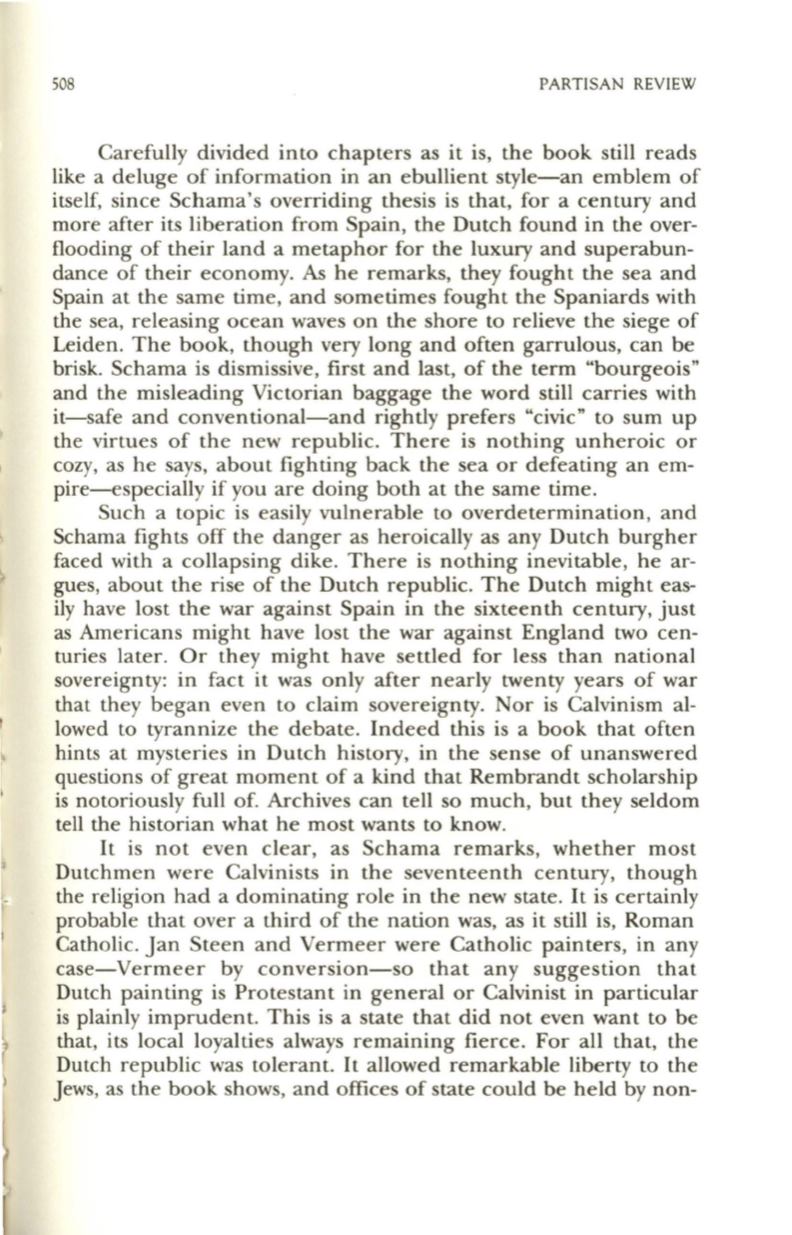
508
PARTISAN REVIEW
Carefully divided into chapters as it is, the book still reads
like a deluge of information in an ebullient style-an emblem of
itself, since Schama's overriding thesis is that, for a century and
more after its liberation from Spain, the Dutch found in the over–
flooding of their land a metaphor for the luxury and superabun–
dance of their economy. As he remarks, they fought the sea and
Spain at the same time, and sometimes fought the Spaniards with
the sea, releasing ocean waves on the shore to relieve the siege of
Leiden. The book, though very long and often garrulous, can be
brisk. Schama is dismissive, first and last, of the term "bourgeois"
and the misleading Victorian baggage the word still carries with
it-safe and conventional-and rightly prefers "civic" to sum up
the virtues of the new republic. There is nothing unheroic or
cozy, as he says, about fighting back the sea or defeating an em–
pire-especially if you are doing both at the same time.
Such a topic is easily vulnerable to overdetermination, and
Schama fights off the danger as heroically as any Dutch burgher
faced with a collapsing dike. There is nothing inevitable, he ar–
gues, about the rise of the Dutch republic. The Dutch might eas–
ily have lost the war against Spain in the sixteenth century, just
as Americans might have lost the war against England two cen–
turies later. Or they might have settled for less than national
sovereignty: in fact it was only after nearly twenty years of war
that they began even to claim sovereignty. Nor is Calvinism al–
lowed to tyrannize the debate. Indeed this is a book that often
hints at mysteries in Dutch history, in the sense of unanswered
questions of great moment of a kind that Rembrandt scholarship
is notoriously full of. Archives can tell so much, but they seldom
tell the historian what he most wants to know.
It is not even clear, as Schama remarks, whether most
Dutchmen were Calvinists in the seventeenth century, though
the religion had a dominating role in the new state. It is certainly
probable that over a third of the nation was, as it still is, Roman
Catholic. Jan Steen and Vermeer were Catholic painters, in any
case-Vermeer by conversion-so that any suggestion that
Dutch painting is Protestant in general or Calvinist in particular
is plainly imprudent. This is a state that did not even want to be
that, its local loyalties always remaining fierce. For all that, the
Dutch republic was tolerant. It allowed remarkable liberty to the
Jews, as the book shows, and offices of state could be held by non-


